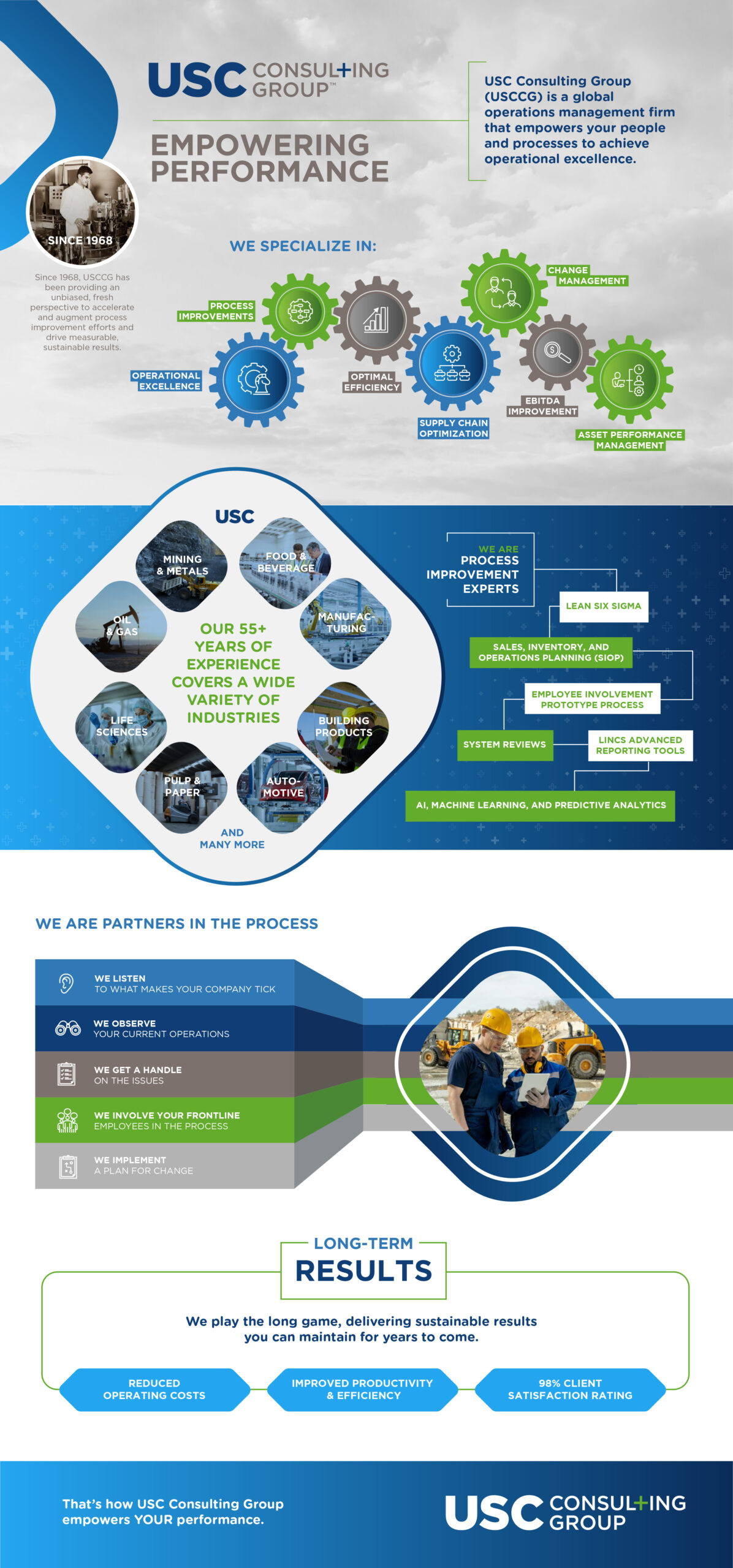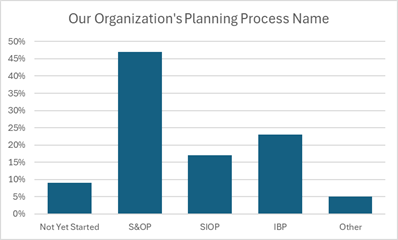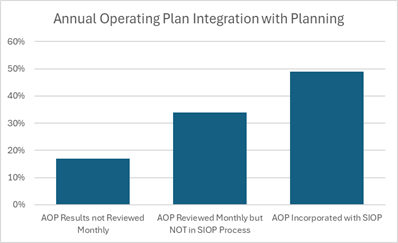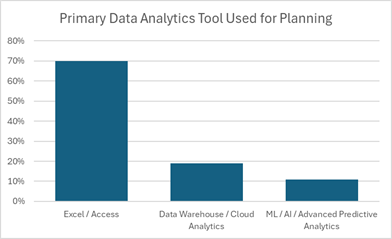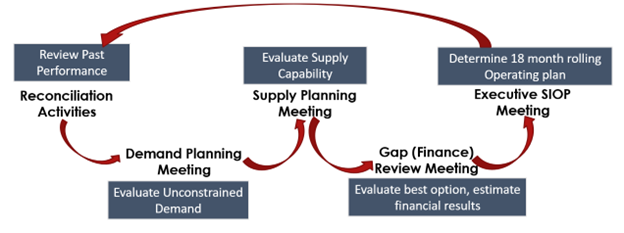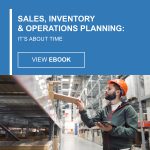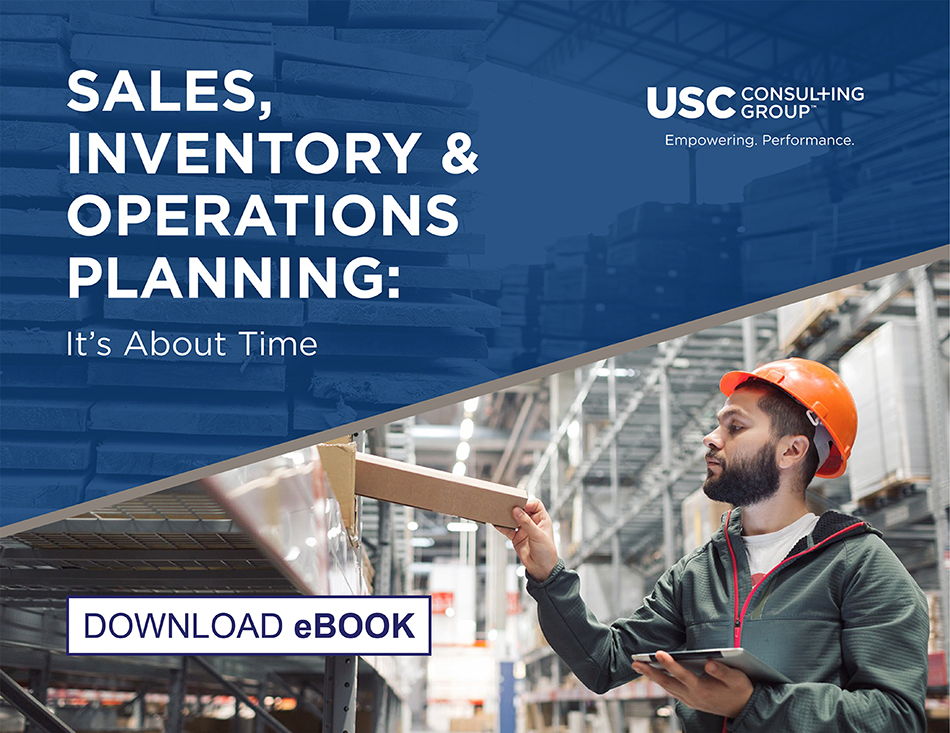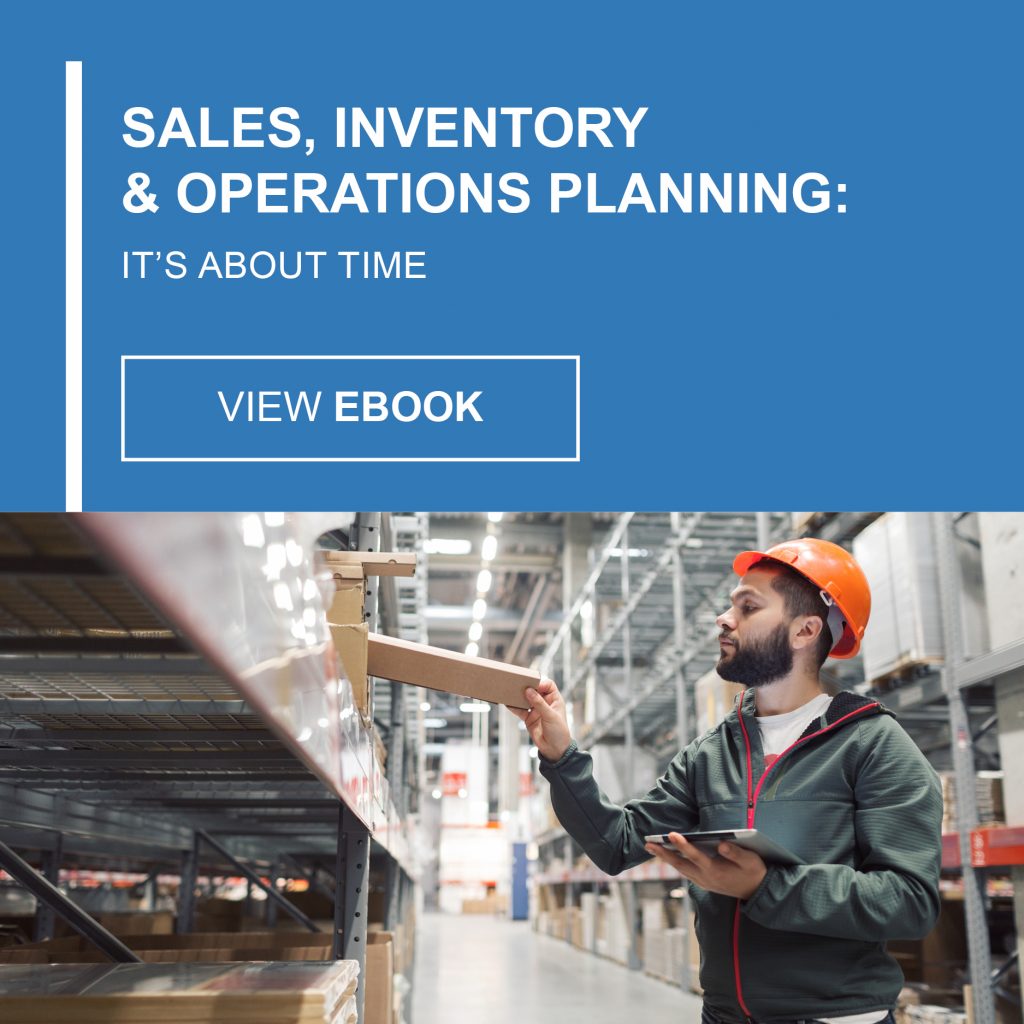-
Subscribe to Blog:
SEARCH THE BLOG
CATEGORIES
- Aerospace
- Asset Maintenance
- Automotive
- Blog
- Building Products
- Case Studies
- Chemical Processing
- Consulting
- Food & Beverage
- Forestry Products
- Hospitals & Healthcare
- Knowledge Transfer
- Lean Manufacturing
- Life Sciences
- Logistics
- Manufacturing
- Material Utilization
- Metals
- Mining
- News
- Office Politics
- Oil & Gas
- Plastics
- Private Equity
- Process Improvement
- Project Management
- Spend Management
- Supply Chain
- Uncategorized
- Utilities
- Whitepapers
BLOG ARCHIVES
- July 2025 (1)
- June 2025 (4)
- May 2025 (1)
- April 2025 (1)
- March 2025 (1)
- February 2025 (4)
- January 2025 (4)
- December 2024 (4)
- November 2024 (2)
- October 2024 (6)
- September 2024 (5)
- August 2024 (5)
- July 2024 (6)
- June 2024 (3)
- May 2024 (3)
- April 2024 (4)
- March 2024 (3)
- February 2024 (4)
- January 2024 (5)
- December 2023 (2)
- November 2023 (1)
- October 2023 (6)
- September 2023 (3)
- August 2023 (4)
- July 2023 (2)
- June 2023 (3)
- May 2023 (7)
- April 2023 (3)
- March 2023 (3)
- February 2023 (5)
- January 2023 (6)
- December 2022 (2)
- November 2022 (5)
- October 2022 (5)
- September 2022 (5)
- August 2022 (6)
- July 2022 (3)
- June 2022 (4)
- May 2022 (5)
- April 2022 (3)
- March 2022 (5)
- February 2022 (4)
- January 2022 (7)
- December 2021 (3)
- November 2021 (5)
- October 2021 (3)
- September 2021 (2)
- August 2021 (6)
- July 2021 (2)
- June 2021 (10)
- May 2021 (4)
- April 2021 (5)
- March 2021 (5)
- February 2021 (3)
- January 2021 (4)
- December 2020 (3)
- November 2020 (3)
- October 2020 (3)
- September 2020 (3)
- August 2020 (4)
- July 2020 (3)
- June 2020 (5)
- May 2020 (3)
- April 2020 (3)
- March 2020 (4)
- February 2020 (4)
- January 2020 (4)
- December 2019 (3)
- November 2019 (2)
- October 2019 (4)
- September 2019 (2)
- August 2019 (4)
- July 2019 (3)
- June 2019 (4)
- May 2019 (2)
- April 2019 (4)
- March 2019 (4)
- February 2019 (5)
- January 2019 (5)
- December 2018 (2)
- November 2018 (2)
- October 2018 (5)
- September 2018 (4)
- August 2018 (3)
- July 2018 (2)
- June 2018 (4)
- May 2018 (3)
- April 2018 (3)
- March 2018 (2)
- February 2018 (2)
- January 2018 (1)
- December 2017 (1)
- November 2017 (2)
- October 2017 (2)
- September 2017 (1)
- August 2017 (2)
- July 2017 (2)
- June 2017 (1)
- April 2017 (3)
- March 2017 (3)
- February 2017 (2)
- January 2017 (2)
- December 2016 (2)
- November 2016 (4)
- October 2016 (4)
- September 2016 (3)
- August 2016 (6)
- July 2016 (4)
- June 2016 (4)
- May 2016 (1)
- April 2016 (3)
- March 2016 (4)
- February 2016 (2)
- January 2016 (4)
- December 2015 (3)
- November 2015 (3)
- October 2015 (1)
- September 2015 (1)
- August 2015 (4)
- July 2015 (6)
- June 2015 (4)
- May 2015 (7)
- April 2015 (6)
- March 2015 (6)
- February 2015 (4)
- January 2015 (3)
CONNECT WITH US
Tag Archives: Sales Inventory and Operations Planning
At USC Consulting Group, we’ve been empowering performance for more than 50 years. What does that mean?
It means we’re an operations management and process improvement firm that empowers your people and processes to achieve operational excellence.
The below graphic lays out our experience and the areas we specialize in:
Let’s look in more detail at how USC partners with you to accelerate and augment your process improvement efforts.
What we focus on
Operational excellence. We help clients define and implement a strategic approach to achieving and maintaining the highest levels of operational performance. It’s about eliminating waste, improving quality and ramping up productivity.
Process improvements. We look at your processes through the lens of efficiency and effectiveness. We identify bottlenecks that might be slowing down your workflow, assessing the “we’ve always done it this way” processes that every business has. We find that a fresh set of eyes on these types of long-held processes can yield more effective ways to achieve results.
Optimal efficiency. This is about the “well-oiled machine” factor. Everyone knows what that is, although it’s different for every company. It’s when you’re cooking and booking, churning and burning, and achieving the maximum throughput for your efforts.
Supply chain optimization. In the post-Covid era, we’re still seeing supply chain disruption and the headaches they cause. We help companies analyze their supply chain networks and spot inefficiencies and bottlenecks. Is there a supplier closer to home? Is it time to reshore? Can we improve procurement or logistics?
Change management. Many of the process changes we recommend involve new ways of doing things – perhaps significant changes. With training and development, strong communication and getting feedback and input from stakeholders, we can help companies embrace change for the better.
Asset Performance Management. At USC, we focus on getting the most out of the assets you already have. Heavy investments in new technology is not always necessary, especially if your old workhorses just need some care and feeding. Applying predictive maintenance to reduce unplanned downtime, usage that doesn’t cause more wear and tear than necessary, and processes to extend the lifecycle of the tools you rely on.
EBITDA improvement. This refers to a company’s Earnings Before Interest, Taxes, Depreciation and Amortization. Sounds like your worst day in the accountant’s office, right? But it’s really about helping clients look for cost-savings opportunities, revenue enhancement, and more. It’s also about everything else we do – productivity improvement, asset management, operational efficiency, cost reduction and more.
How we do it
How do we enhance our clients’ operations? We’re experts in process improvement methodologies and tools, like:
Lean Six Sigma. LSS is a combination of two powerful methodologies, Lean, which focuses on limiting waste in a process, and Six Sigma, which focuses on increasing quality.
Sales, Inventory, and Operations Planning (SIOP). In a nutshell, SIOP aligns sales, inventory and operations planning functions to improve demand forecasting, efficiency, supply chain performance and more.
Employee Involvement Prototype Process. One of the cornerstone techniques USC uses to validate and measurably implement changes to elements of the MOS with full client personnel engagement. Your employees are the most vital components to every project, especially the workers in the trenches on the shop floor or production site. We involve them every step of the way.
System Reviews. We do a comprehensive analysis of your systems, processes, procedures and more. System Reviews tell the story of a company’s process and depicts the future state MOS with the deficiencies from current state corrected. It shows the flow of data, actionable information and decision-making points in a closed loop environment.
LINCS advanced reporting tools. The Lean Information Control System (LINCS) is a state-of-the-art software application that facilitate fact-based decision making from the shop floor to the boardroom. It includes modules for advanced planning, manufacturing and logistics, value stream mapping, scheduling, inventory analysis and more. Operators are able to see and evaluate their work as it takes place, while executives and managers are better equipped to prioritize activities based on accurate, actionable information.
AI, Machine Learning, and Predictive Analytics. Much like Netflix’s use of predictive analytics created a seismic shift in consumer expectations, this new technology is transforming operating procedures and processes. Predictive analytics helps companies better understand what’s occurring in any given process, refine and optimize processes, and more. But, it also needs the human touch. People aren’t getting replaced by the bots in this area any time soon. To learn more, download our free eBook: AI and Machine Learning: Predicting the Future.
Our 55-plus years of experience covers a wide variety of industries, including:
- Mining & Metals
- Food & Beverage
- Manufacturing
- Building Products
- Automotive
- Pulp & Paper
- Life Sciences
- Oil & Gas
- Utilities & Energy
- …And many more
We have a defining principle to our approach that guides every project. We do not swoop in and tell companies how to do it better.
We are partners in the process. We work with your team to implement the changes at the point of execution.
We listen to what makes your company tick, observe your current operations, get a handle on the issues, involve your frontline employees in the process, and implement a plan for change.
We play the long game, delivering results our clients can maintain for years to come. We don’t have our 98% customer satisfaction rating for nothing.
That’s how USC Consulting Group empowers YOUR performance.
There are a lot of terms used by organizations to describe their mid to long range strategic planning discipline. Whether your organization calls it Integrated Business Planning (IBP), Sales and Operations Planning (S&OP), Sales, Inventory and Operations Planning (SIOP) or something else, the key message is that abbreviations are not important – results are. Strong strategic planning discipline orchestrates sales plans, operations constraints, and financial objectives while giving guidance to short-term scheduling for execution. At USC, we call this discipline SIOP due to the strategic importance of inventory to smooth supply and demand fluctuations to maintain customer service levels.
Survey Says!
Businesses find S&OP beneficial because it helps balance supply and demand, it improves communication between sales and other departments, leads to better decision-making with everyone on the same page, and it ultimately results in better efficiency. Most organizations refer to their planning process as S&OP, but we think it’s incomplete. Inventory needs to be part of this process to unlock greater levels of operational efficiency and customer service rates.
Most companies have less than five years of experience utilizing a SIOP discipline and significantly, fewer than 50% of all companies integrate financial objectives into their monthly planning process. The result is the organization’s annual plans are disconnected from the monthly “replanning” SIOP process. Managers are typically held accountable to their annual plans which are increasingly out of date as the year progresses and better plans are known resulting in sub-optimal decision making based on old assumptions.
Furthermore, since most companies rely on static models such as Excel and Access to as their primary analytical tools, the planning process can be labor intensive, time consuming and more prone to human error. Integrating decision support systems with operations data, procurement data, inventory data, and customer demand improves simulation and scenario analysis capabilities. Integrating with advanced predictive analytics can further augment planning knowledge.
Sales, Inventory and Operations Planning
We tell our clients that SIOP is making sure you’re having the right conversations about the right things at the right time.
Sales, Inventory, and Operations Planning is a holistic process that integrates customer-focused demand plans with production, sourcing and inventory plans and results in improved tactical and long-term business decision making capability.
Keys to Implementing a Successful SIOP Process
- Everyone is on board. It’s simply not going to work if it’s not interdepartmental. You need everyone – Sales & Marketing, Operations, Procurement and Logistics, Planning, Product Development, Finance, IT, and the C-Suite working in lock step from the same plan.
- Planning cycles should be monthly. This isn’t a one-and-done process. Once you get on the SIOP treadmill, you don’t ever get off. We advise a rolling 18-month period, updated monthly. This ensures the re-planning process is looking out beyond the current budget year and for strategic planning.
- People and Process Discipline is a must. A good SIOP process includes a SIOP monthly process schedule/calendar of key events, RACIs, mutually agreed upon KPIs, actual vs forecasted reporting scorecards, assumptions and occurrences reporting, decisions made with action item follow up.
But Why the Added Focus on Inventory?
Inventory tells a story about a business’ operational efficiency. Inventory accounts pool the collective decisions and market forces affecting the company, telling stories of sales forecasting accuracy, manufacturing efficiency, planning effectiveness, supply chain disruptions, and quality control. Lean inventories reveal robust planning systems and culture, integrated ERP systems, and good governance. Excess inventories can be a short-term benefit to sustain high customer service levels during times of uncertainty, however they come with high obsolescence and carrying costs. Inventory is a strategic lever to smooth operations, procurement, and sales fluctuations. The right level of inventory is different for each company, and changes based on current consumer demand, supply chain disruptions, and strategic decisions.
Benefits of SIOP
- Gets departments in sync. The SIOP process helps to determine whether
your original financial expectations / budget, and your current sales plan and operations plan are in sync with each other. Updating your forecast monthly will show you where problems lie and provide action plans to address shortfalls. - Ensures that the plans are realistic. The key stakeholders from each department participate in formulating the SIOP plan. Since all assumptions are transparent throughout the process, each department has more time to evaluate its resources and capabilities in the context of the most recent company-wide plan. The result is a solid set of department plans that are based on latest expectations and known capabilities.
- Effectively manages change. Many industries have faced significant planning challenges in recent years. Having an agile and timely planning process helps decision makers roll with the punches. With SIOP, your business can make holistic, controlled responses to changes instead of making knee-jerk, departmental centric reactions.
- Measures performance. Our customized approach to KPIs ensures that success measurements identify where the organization is challenged and where to focus on improvement.
- Builds teamwork. SIOP gives each department an opportunity to participate in the overall planning process.
Interested to learn more about how adding inventory to your planning can make you more efficient? For more information on how SIOP can help your business read our eBook, “Sales, Inventory and Operations Planning: It’s About Time.”
*This article is written by USC Consulting Group’s Supply Chain Practice Leader, David Newman.
The rise in food prices is all over the news these days. The USDA and the Consumer Price Index tell us that, in 2023, grocery store purchases were up 5% from the previous year, while eating out cost an average of 7.1% more. This year, those costs are set to bump up another 1.3%. But, if you work in food manufacturing, (or buy groceries for your household) you don’t need the government to tell you those prices are rising.
It’s the trickle-down effect. Challenges facing food manufacturers mean higher production costs, which are ultimately influencing everyone’s grocery bills.
Here’s why, and what food manufacturers can do to save money on the front end to stop that trickle down.
Challenges affecting food prices
Some of the issues food manufacturers are navigating through that can ultimately show up in prices at the grocery store include:
Supply chain disruptions. Whether it’s geopolitical tensions, droughts, wildfires, strikes, or other events, it can disrupt the supply of raw materials food manufacturers use to get the job done. This can and does create delays, backlogs and other costly challenges.
Price inflation. Before price increases hit the grocery store shelves, the rising cost of things like grain, meat and dairy affects manufacturers who use those raw materials to make their goods.
Shipping costs. Rising fuel prices affect how much it costs to get those raw materials to food manufacturers, whether it’s coming from across town or across the world.
Labor shortages. The continuing battle to hire and train good people, and retain the ones you have, contributes to labor costs at the plant, which contributes to rising costs for the end user.
Evolving demand. Consumers are ever changing in their preferences and expectations. People are increasingly demanding sustainability, ethical sourcing, friendly practices like free-ranging and more. And dietary trends shift too, with plant-based alternatives growing in popularity on the one hand and minimally-processed meals on the other. This makes it difficult for manufacturers to forecast to accommodate the demand.
Regulations. Compliance with FDA regulations can be complex at best and lead to inefficiency and higher costs for manufacturers at worst. It’s especially prevalent in yield, when manufacturers are trying to hit the “wiggle room” the government allows between what the package label says and how much product is actually in the package. Not wanting to be out of compliance, manufacturers often overfill packaging to reach that sweet spot, but it means they’re actually giving away product… and profits.
All of these challenges can have a direct impact on manufacturing costs and will inevitably trickle down to their customers. It boils down to:
Higher production costs. This is by no means unique to the food manufacturing industry. Higher production costs on things like raw materials, labor, transportation and more mean higher costs to the customer – that’s a fact of life for most every business.
Supply and demand uncertainty. Supply chain disruption leads to shortages, which cause prices to rise.
How food manufacturers can tackle these challenges
In the short term, agility is key. But strategic planning, process improvements, and a focus on efficiency can shore up food manufacturers for the long run.
Sales, Inventory & Operations Planning which we call SIOP, takes the sales and operations planning (S&OP) process that most manufacturers use and adds inventory to the mix. At USCCG, we find inventory is often left out of the planning process, but it can be as important of a variable and a strategic tool. Following this methodology helps manufacturers eliminate waste, increase efficiencies and achieve an optimal level between not enough and too much.
It’s also an unparalleled tool for inventory management, which is a tricky business today given all of the challenges this industry is facing.
If you would like to learn more about SIOP, download our (free) eBook, “Sales, Inventory & Operations Planning: It’s About Time.”
Process improvements. One way streamlining and refocusing your processes can help manufacturers now is in the area of yield. Getting a handle on yield — improving processes so you’re not giving away product — can save millions of dollars. To learn more about how one food distributor saved $2.3 million per year by improving their yield, read “Food Distributor Masters Management by the Numbers to Improve Yield.” And speaking of management by the numbers…
Implement a Solid Management Operations System. Many manufacturers, whether food or other industries, tend to manage on the basis of what has worked in the past, a gut feeling by seasoned managers, and other methods. At USCCG, we like hard numbers, streamlined processes and everyone doing the same job the same way. And about that…
Focus on training. It’s crucial to have all shifts, all facilities and all employees working in tandem, doing the same job the same way. It’s how you create the proverbial well-oiled machine.
None of these tactics will stop challenges from happening, but they can and do make your operations more efficient, and in turn, save you money. Not only will it improve your bottom line, but you might just be able to trickle the savings down to your customers, too.
All roads are leading most industries to adopt increasingly more sustainable practices. The pressure for manufacturers to go green is growing in the face of climate change, supply chain challenges and especially consumer preferences.
A report from the Roundup, “Environmentally Conscious Consumer Statistics,” paints a pretty clear picture.
- Products marketed as sustainable grew 2.7x faster than those that were not.
- 78% of consumers feel that sustainability is important.
- The sale of carbon labeled products (such as those with 1% For the Planet or Climate Neutral Certification) doubled in one year, reaching $3.4 billion in 2021.
- 62% of people say they “always or often” seek products to purchase because they are sustainable, which is up from just 27% in 2021.
Consumers are opting for products that are sustainable, but that’s not the only headline for manufacturers. Because, it’s not just products. It’s the companies, too. Some 29% of consumers said they are “often or always” influenced by a company’s commitment to adopting more sustainable practices.
Sustainability challenges: It’s not easy being green
Many in the manufacturing industry are undoubtedly feeling some kinship to Kermit the Frog these days. Despite the pressure to adopt more sustainable practices, as the Muppet so famously lamented: “It’s not easy being green.”
It’s all well and good to work toward shoring up the environment (and we need to) but it’s a challenging lift for manufacturers. Some obstacles include:
High upfront costs. New technologies, processes and materials come at a price. It’s especially tough for manufacturers in industries like food and beverage, which has razor-thin margins.
Long wait for return-on-investment. ROI from major expenses can take years to come to fruition.
Supply chain challenges. Even if your company has shifted to more sustainable practices, what about your suppliers?
Skilled labor shortage. It’s difficult enough to find warm bodies to work on the line. But new technologies come with new skills requirements.
Opportunities are emerging
At USC Consulting Group, we help companies look for the opportunities within challenging situations. We always find the silver linings. Here are a few:
Cost reduction. Yes, there are upfront costs. But sustainable practices can lead to reduced energy and water consumption, the possibility of lower regulatory compliance costs, and lower materials costs by using recycled materials.
New partners, suppliers and revenue streams. The sustainable marketplace is an ecosystem all its own. It’s possible to find new partners, customers and even suppliers.
Attract and retain top talent. Yes, there is a labor shortage. But the companies with strong sustainable practices are attracting the best people out there. Companies that care for the environment also find their employees are more engaged and involved.
Governmental tax breaks. The government is committed to rewarding companies for adopting more sustainable practices with tax breaks and other financial incentives.
Strategies for manufacturers
One of the best ways to adopt more sustainable practices is to first look in the mirror. It’s not necessarily about investing in new technologies and turning the world upside down. First, look at your processes and operating systems. You’ll likely find efficiencies you didn’t even know were there. Places to start:
Minimizing waste. Lean Six Sigma methodologies can find hidden wastes and lead to more efficient operations. Not only will it save you considerable money, but minimizing waste is a key principle in sustainability. That’s a win-win.
Operations improvements. How efficient are your operations? A solid management operations system, which is a structured approach to your operations, creates much greater efficiency. The best MOS focus on processes, systems, roles and structures to map out how the job gets done, and by whom. Learn more about it in our short video, Stop the Firefighting Mentality to Improve Your Bottom Line.
Sales, inventory and operations planning. You’ve heard of S&OP. We added the “I.” We find inventory to be a key piece of the operations puzzle. When doing sales forecasting and planning for demand and supply, adding inventory elevates the process a notch. It makes inventory a strategic tool. Learn more about it in our free eBook, “Sales, Inventory and Operations Planning: It’s About Time.”
Training. About that skilled labor shortage. A way to combat that is by training and upskilling your people. And solid training for not just employees on the line but managers, too, will get everyone on the same page, creating greater efficiency organization-wide.
By moving toward more sustainable practices, manufacturers can ultimately reduce costs, find greater efficiencies, attract both consumers and employees and help the planet in the process. But it’s not easy. At USC Consulting Group, we’re the experts on helping companies become more efficient, effective and profitable. With more than 55 years behind us, we’ve seen trends come and go. The key is turning challenges into opportunities. Get in touch to find out more.
The COVID-era supply chain disruptions are slowly but surely easing up for manufacturers around the globe. While the worldwide market is not yet fully recovered, signs point to a strong resurgence in 2023, with a return to normalcy by 2024. Even though good news is on the horizon for manufacturers, there are still a number of challenges to be aware of that will impact day-to-day operations. Here’s an overview of a few of the top manufacturing challenges for 2023, and how to handle them.
Challenge: Legacy technologies
Many manufacturers operate with legacy technologies — outdated hardware or software systems. These outdated systems can cause disruption for an organization in a few key areas.
The first problem: Legacy technologies can cause efficiency issues. Since these systems can be years (and sometimes decades) old, they simply don’t have the same features and capabilities of newer software on the market. Additionally, these legacy systems can pose a security risk. Older technology doesn’t have the same safeguards as newer systems, and cybercriminals have a much easier time infiltrating outdated software than one that is up-to-date.
Despite these problems, manufacturers can be hesitant to change systems due to familiarity, not wanting to enact a full system overhaul, or a mix of the two.
Strategy: Invest in new technologies and smart warehouses
Investing in emerging technologies should be a priority for manufacturers heading into the new year.
It’s a wise strategy, not only to become more efficient and protect systems from infiltration, but newer technologies can increase safety in the workplace and free up employees to handle more productive tasks. A recent survey from Deloitte found that 85% of manufacturing executives think that some form of robotics on the production line could increase employee safety, and 78% agree that updated technology can minimize repetitive work, empowering employees to focus on more productive and impactful tasks.
Challenge: Inflation
Starting in mid-2022, inflation across all essential goods prompted public backlash, not to mention squeezing the wallets of consumers and businesses alike. Bearing the brunt of the blame was the global supply chain, and the bottlenecks and scarcity it caused in markets across the world. Although those pressures are easing headed into the new year, inflation will still be a factor in 2023.
Strategy: Re-evaluate costs during design
For manufacturers, inflation means more careful planning to ensure operations remain lean, mean and profitable.
One way of doing this is by implementing Design to Cost — a method in which a manufacturer combines cost management with decision-making during the design stage of a product. Rather than the normal method of thinking about costs after a rough design of a product is made, the unit and material costs are fully integrated during planning to ensure products are profitable.
This type of thinking seems to be the reality for manufacturers in 2023, as a recent Forbes survey found that 87% of manufacturing CEOs plan to increase prices in the new year. Therefore, it’s important for all manufactures to think ahead, and integrate material costs into their design process as soon as possible.
Challenge: Inventory uncertainty
Inventory uncertainty remains one of the manufacturing challenges in 2023. Despite the healing global supply chain, manufacturers still need to strike a proper balance between stockpiling inventory and buying just-in-time. Striking that balance can be tricky. Not getting it right can cause businesses to become over- or under-leveraged at a moment’s notice — affecting the bottom line in the process.
Strategy: SIOP
Sales, Inventory & Operations Planning, SIOP, takes the normal sales and operations planning process and makes inventory just as important of a variable and a strategic tool. Following this methodology helps manufacturers eliminate waste, increase efficiencies and achieve an optimal level between not enough and too much.
We recommend that the SIOP horizon be a minimum rolling 14-month period that gets updated monthly. The aim is to look ahead multiple quarters to make sure inventory is available exactly when you need it. Involving a wide range of departments such as sales, marketing, engineering and finance, SIOP is a system that involves the entire organization to ensure yearly goals and objectives are met.
If you would like to learn more about SIOP, download our (free) eBook, “Sales, Inventory & Operations Planning: It’s About Time.”
Keep moving forward
There will be manufacturing challenges in 2023 and beyond. By addressing your legacy technologies, adjusting to inflation fluxes, and taking the uncertainty out of your inventory management, you will be able to fine-tune your operations for optimal performance.
If your business could use some horsepower to power up your team on improvement initiatives, contact USC Consulting Group and we will put our over 50 years of experience to work for you.
Supply chain disruption. Layoffs. The Great Resignation. Hiring wars. The past few years have not been smooth sailing for the manufacturing industry. Dealing with ongoing challenges can take more time out of your day than simply getting the job done.
So, how do manufacturers survive in this tumultuous business climate? Our subject matter experts here at USC Consulting Group have identified and examined six challenges as the most common issues bedeviling manufacturing right now, along with the strategies we offer to our clients to tackle them.
Manufacturing challenges include:
- The ongoing hiring wars
- The skills gap
- Creating a better frontline worker experience
- Digital transformation
- Supply chain disruption and inventory management
- Change management
Dive deeper into each one of these issues and learn the solutions to overcome them in our free white paper “The Consultant’s Guide to Overcoming Today’s Manufacturing Challenges.”
1. The Ongoing Hiring Wars
Like most other industries these days, manufacturing is grappling with the most challenging hiring market in decades. IndustryWeek reports that 54% of U.S. manufacturers are finding it difficult to attract skilled workers to get the job done. That’s up from 38% before the pandemic.
2. The Skills Gap
The hiring wars and the skills gap are giving manufacturing a one-two punch. Not only is it incredibly challenging to fill open positions, but filling them with people who have the skills and experience to get the job done right is proving to be nearly impossible. Hence, the skills gap.
3. A Better Frontline Worker Experience
Just 36% of U.S. employees are engaged at work, and 74% are actively looking for new jobs, according to a Gallup survey. With all of the hiring challenges and shortages of skilled workers, it’s more important than ever to focus on your frontline workforce.
4. Digital Transformation
Digital transformation has been an industry term for several years now. What it means, at its core, is utilizing digital technology to make processes faster, easier, safer and more efficient. The pandemic kicked digital transformation up a notch for manufacturers.
5. Supply Chain Disruption and Inventory Management
Supply chain and inventory management issues have long been a challenge for manufacturers, made worse by the pandemic. These are separate issues, but two sides of the same coin.
6. Change Management
All of these challenges represent and require some degree of organizational change. The term “change management” may seem like the jargon of the moment, but really, it’s about laying the groundwork for change to be successful in your organization.
Learn about each of these challenges in more detail and how to overcome each issue by downloading our white paper:
The Consultant’s Guide to Overcoming Today’s Manufacturing Challenges
If you’re grappling with any of these manufacturing challenges, USC Consulting Group is here to help. We are a global operations management consulting firm that has been helping organizations through more than 50 years of challenges. It’s our specialty. Give us a call today to talk about how we can help you.
Remember the familiar line from an old TV cop show: “There are 8 million stories in the Naked City”? As USC Consulting Group’s Vice President and Senior Operations Manager Paul Harker likes to point out, the same could be said about your inventory.
Like most dramas, the story of your inventory management can take unexpected turns. It’s very easy to get lost in the din of safety stock levels vs. Lean principles, order quantities, reorder triggers and the lead time to replenish the stock. Supply chain disruptions and shortages haven’t helped matters over the past few years. The plot unravels when these stories don’t add up to a single coherent tale.
Major characters in this inventory management drama:
Operations, which sees inventory as a buffer against fluctuating demand. But how much is too much? They don’t want an excess of stock, which would fly in the face of the popular “just in time” or Lean operating method, which, admittedly took a bit of a hit during the pandemic when people panicked about shortages and bolstered their safety stock.
Sales wants product at the ready at a moment’s notice, not “just in time,” but “all the time.” They’re not overly concerned with storage space, inventory investment or production efficiency.
Finance looks at inventory as a double-edged sword. They want to reduce inventory in order to free up cash and minimize carrying costs. But inventory is also collateral. High levels of production, whether the goods are sold or not, can absorb overhead and drive better month-end results, which are Finance’s Holy Grail.
Executives are focused on achieving quarterly corporate objectives and view inventory in terms of dollars.
At a fundamental level, all of these decision-makers speak different languages, have different perspectives and conflicting messages. Of course, everyone has the same goals: efficiency and profitability. But they may be at cross purposes getting there.
The Hero: SIOP
You might be thinking: “Is that a typo? Don’t they mean S&OP?” Yes and no. No, it’s not a typo. And yes, S&OP, the business management process that involves sales forecast reports, planning for demand and supply, and other factors, is the foundation of all of this. We just think S&OP is missing something: Inventory.
When you’re focusing on inventory, it elevates the entire planning process up a notch. When your inventory is optimized, things tend to fall into place. But it is not an easy mark to hit in these days of supply chain disruption and the sometimes conflicting goals of key decision-makers. With SIOP, you can circumvent these challenges and make your inventory work for you.
“A key to SIOP is to emphasize inventory as a strategic tool to help offset variation in either demand or production issues,” explains David Shouldice, Senior Vice President and Managing Director at USC Consulting Group. “One lever of control in the SIOP process is to make inventory harder working as a strategic tool.”
As Shouldice notes, it’s about having the right conversations about the right topics at the right time.
This isn’t a one-and-done process. The SIOP planning horizon should be at least a rolling 14-month period. We recommend that our clients update their plans monthly. Some do it more often than that. The point is covering a sufficient span of time to make sure the necessary resources will be available when you need them. The plans take into account projections made by the sales and marketing departments and the resources available from manufacturing, engineering, purchasing and finance. All of that together works toward hitting the company’s goals and objectives.
Using SIOP for inventory management
Sales, Inventory and Operations Planning helps your company get departments in sync, ensures that everyone is on the same page and realistic about the process, helps you manage and roll with changes, and measures performance.
One powerful component of SIOP is that the process involves all of the key players in your inventory drama.
Here’s who we typically see take part in the SIOP process:
- President
- Vice President, Sales and Marketing
- Vice President, Operations
- Director of Logistics
- Vice President, Engineering
- Vice President, Finance
- Vice President, Information Systems
- Vice President, Human Resources
Different languages? You bet. But getting them all working together cuts down on the noise of those different languages. One reason SIOP is such a critical management tool is that key players from many departments are working from the same plan, and able to compare actual results to plan, evaluate their performance, and prepare updated plans going forward. SIOP: The universal translator, or C-3PO, for your business.
It is a powerful tool to help you wrangle your inventory management, achieve the optimal balance between not enough and too much, and settle back into Lean (or just in time) manufacturing principles that can eliminate waste and help ramp up your efficiency.
If you’d like to learn more about SIOP, download our (free) eBook, “Sales, Inventory & Operations Planning: It’s About Time.”
Operations management consulting is a discipline designed to improve your company’s internal operations and processes, making them more efficient, streamlined and ultimately, profitable. It’s what we have been doing at USC Consulting Group for more than 50 years now. During that time, we’ve run across some misconceptions about operations management consulting. In this article, we’ll give you a short rundown of what operations consulting is, and highlight (and debunk) some of the more common myths that are floating around out there.
Operations Management Consulting 101
Operations consultants are outside experts (like us) who can look at your operations with a fresh set of eyes. If your business has a problem or obstacle you can’t solve — a slowdown in throughput, trouble on the line, machinery problems, supply chain issues, demand outweighing supply and more — it’s time to bring in an operations consultant. Operations consultants will first look at your current operations model, systems and day-to-day processes of getting the job done. They talk with front-line workers, executives and everyone in between. Listening is a big part of the job. They employ methodologies like Lean Six Sigma, SIOP, the Five Ms and other tactics to uncover what’s bedeviling your operation and create ways to solve those problems.
Some operations consultants are advisory consultants, or “boardroom consultants” who perform a two- to three-week study and provide a book of recommendations to help you out, and then hand it to you and go on their way. Implementing consultants, like USC, roll up their sleeves and work with a company’s internal teams for as little as 12 weeks to upwards of around 40 weeks depending on the scope of the project to help affect change, and ensure those changes will stick.
For a deeper look at operations consulting, read our blog: “What Is Operations Consulting and Can It Help My Business?” Now, here are three common myths about operations consulting, debunked.
Operations Consulting Myths
Myth: Operations consulting is all about math
At USC, we like to say we’re 80% people and processes, 20% numbers. Yes, some data crunching is involved. But we’re more about getting into your operations, talking to people from the front-line workers to the boardroom, and listening to the pros on the line who do the job day-in and day-out. We use common-sense methodologies to find opportunities for efficiency that you might have missed. We’re not a bunch of pencil-pushing statisticians. Anything but.
Myth: Operations consulting is only for the manufacturing sector
We work with a wide range of industries, including chemical processing, forestry products, food & beverage, life sciences, mining & metals, oil & gas, transportation & logistics, private equity, and yes, manufacturing. We also work with a wide range of disciplines and departments within these industries, including organizational operations, supply chain, sourcing & procurement, maintenance, finance, business process management, shutdowns & outages, research & development and outsourcing.
Myth: Operations consulting has no strategic importance
We’ve got to admit it, this one stings. People somehow got the notion that operations consulting looks only at the day-to-day aspects of getting the job done, and not the big picture, so there’s no strategic importance in what we do. That couldn’t be further from the truth.
One example of how operations consulting is all about strategic importance: SIOP. What is it? It’s our enhanced methodology on Sales and Operations Planning (S&OP). S&OP is a business management process that involves sales forecast reports, planning for demand and supply, and other factors. The goal is to help companies get a better, clearer look at their operations and create better-informed strategic decisions, allowing them to deliver what clients need in the most profitable way. It’s a useful process, but we’ve found it’s missing a critical area: Inventory. Hence, the addition of the “I” in the acronym.
Adding inventory into the mix is just one additional step, but we find it can be the key to the whole thing. When you’re focusing on inventory, it requires a more careful strategy and elevates the entire planning process up a notch. When your inventory is optimized, which is not an easy mark to hit in these days of supply chain disruption, things tend to fall into place. With SIOP, you can make your inventory work for you.
Sales, Inventory and Operations Planning is a holistic process that integrates customer-focused demand plans with production, sourcing and inventory plans, resulting in improved tactical and long-term decision-making.
So, you see, it’s ALL about strategic importance. Three common myths, debunked!
Want to see more myths busted? Catch the second installment Debunking Myths about Operations Management Consulting: Part 2 here.
If you have questions about operations consulting and what it can do for your business, give us a call or email us at info@usccg.com. We have the answers you’re searching for.
To read more about SIOP, download our free eBook, “Sales, Inventory & Operations Planning: It’s About Time.”
The only thing that’s constant is change. It’s a phrase famously attributed to a Greek philosopher in 500 B.C., but it also sums up the past year and a half in manufacturing and, frankly, just about any industry out there. It seems like change is coming at us faster than ever before. Apps now run our personal lives, and in the workplace, we’ve all had to adapt instantly to everything from customers going away to how the shop floor is configured for employee safety.
The ability to react to sudden events in the marketplace, whether it’s a shift in the economy or a supply chain disruption, requires manufacturers to be agile enough to pivot on a dime. But, it’s not just a matter of being able to roll with the punches. It’s about being able to react quickly to opportunities, too. It’s about growth and the ability to sustain that growth for the long term, come what may.
Change management
When thinking about change management, it’s natural to think of change coming from outside forces. Economy shifts. Supply chain disruptions. Even sudden changes in demand for what you produce. But some change comes internally, as well. Longtime leaders get their gold watches and retire. Companies restructure. Mergers and acquisitions happen. Company culture suddenly takes a nosedive and nobody knows why.
Having a mindset of change management already in place helps companies react quickly and effectively when change inevitably happens.
For manufacturers, the bottom line is always very thin. At USC Consulting Group, we specialize in those tight margins, helping our clients find hidden opportunities to realize and profit from efficiencies they may not even know were there.
Some key factors in creating a change management mindset include:
Acceptance of change. When we uncover efficiencies for our clients, sometimes we ruffle feathers because of a mindset that is built around “it’s the way we’ve always done it.” The idea that it’s OK to let go of some traditional methods, try something new and change processes that just aren’t working anymore is key. This may sound basic, but it is difficult to produce a culture shift like this if your company has been doing the job the same way for years.
C-suite support. The ability to pivot and react has to come from the top.
Employee buy-in. We find that this is crucial to successfully implementing any change, even positive ones. The people doing the job on the shop floor need to embrace it.
Planning. If you fail to plan, as the saying goes, you plan to fail. It may sound a little counterintuitive, planning for change, but we find that if our clients have a solid planning process in place, it can act as a rudder in choppy waters. We recommend a process called Sales, Inventory and Operations Planning that integrates customer-focused demand plans with production, sourcing and inventory plans, resulting in improved tactical and long-term decision-making.
SIOP spotlight
We like to tell our clients that the purpose of SIOP is making sure you’re having the right conversations about the right things at the right time. And getting what you need when you need it.
“Key to the SIOP is to emphasize inventory as a strategic tool to help offset variation in either demand or production issues,” explains David Shouldice, senior vice president and managing director of USC Consulting Group’s global mining and metals practice. “One lever of control in the SIOP process is to make inventory harder working as a strategic tool.”
This isn’t a one-and-done process. We recommend that our clients update their plans monthly. Some do it more often than that. The point is covering a sufficient span of time to make sure the necessary resources will be available when you need them. The plans take into account projections made by the sales and marketing departments and the resources available from manufacturing, engineering, purchasing and finance. All of that together works toward hitting the company’s goals and objectives.
Sales, Inventory and Operations Planning is done on an aggregate level. The big picture, in other words. Those big-picture plans then drive the individual departmental plans. Each month, you meet again to determine whether the overall company plan is on course, and to adjust for changes in the marketplace and changes or problems within the company.
A foundational tenet to a robust SIOP process requires that the right conversations occur about the right topics at the right time. Core components of a successful SIOP process include:
- Sales forecasting and accuracy measures
- Strategic inventory considerations
- Consistent operational capability analysis (capacity and efficiency)
- Cohesive plan with stakeholder collaboration
- Ability to execute the plan or pivot
- Report and review plan versus actual
- Analyze and implement corrective actions
With the right plan in place, your company is positioned well for whatever changes come down the pike. To learn more, contact us and we’ll be happy to talk about how a great plan can help you realize even greater efficiency.
The planning and forecasting process has always been a vital part of manufacturing, but now, after a roller coaster of a year, it’s becoming clear to many in the industry that this process needs to be bulletproof — and in many cases, it isn’t. The good news? A little tweaking and refining can shore up your planning process and help protect your operation against any kind of uncertainty, or disruption, that may come down the pike in years to come.
Problems in planning
You already know that accurate planning and forecasting is designed to anticipate demand and determine how much to produce to meet that demand, including shoring up adequate, but not too much, supply. We find that for a number of our clients, that works out to a “tons per hour” measurement of what they can realistically produce on any given day.
But, snags that manufacturers encounter in their planning process tend to come from the “it’s the way we’ve always done it” files. Here are just a few that we’ve seen lately:
Data is old by the time the plan actually goes into effect. Does this sound familiar? You start planning at the beginning of the month. By the end of the month, you’ve got a plan to hold yourself accountable. Great! But, the problem is, you’re using month-old data to start their planning process, so at the time the plan goes into effect, you’re using two-month-old data.
Data is not uniform. If manufacturers have multiple locations, odds are that they’re not all walking in lockstep when it comes to planning and forecasting. You may have plants doing their own thing, how they’ve always done it in regard to efficiencies, so there is no single source of truth on efficiencies and capabilities companywide.
Vetting time. If manufacturers are taking too much time to vet the plan, it delays the accuracy and immediacy of their data.
Unforeseen circumstances. We all know now, all too well, how unforeseen circumstances can throw a wrench into operations.
Refinements that can solve those problems
We’ve found that for many of our clients, some tweaks and refinements to their planning process can make all the difference. Here are a few problem-solvers that our clients are implementing.
A rolling calendar structure. We recommend instituting a 24-month rolling calendar, so when one month drops off, another is added on the back end. Here’s how it looks in practice:
- The first third of the month. Look back and assess how you performed vs. the plan in the previous month. If you fell short, how can you get better?
- Middle third: Continuous improvement. Develop action items to make the planning more smooth.
- Final third: Actually do the planning. Instead of having two-month-old data, you’ll be working with at most 10- to 15-day-old data.
Compromise on perfection in favor of immediacy. Don’t write those 24 months in stone. The plan might change multiple times between the start of the plan and 24 months down the line because of unforeseen circumstances. Being OK with this might require a huge shift in mindset for some people.
Flexibility. The forecasting and planning process has to be flexible enough in manufacturing to roll with the tides that might shift at any given moment in time.
SIOP. We focus on Sales, Inventory and Operations Planning, a holistic process that integrates customer-focused demand plans with production, sourcing and inventory plans, resulting in improved tactical and long-term business decision-making capability. The purpose of SIOP is making sure the business is having the right conversations about the right things at the right time. Steps in the plan include:
- Sales forecast
- Inventory considerations
- Planning
- Executing the plan
- Reporting and reviewing
- Analyzing and improving
Uniform efficiencies across all plants. If you have multiple locations, get everyone on the same page in terms of planning.
Bottom line, more accurate planning and forecasting is going to make your manufacturing operations more efficient and ultimately more profitable. At USC Consulting Group, we’re dedicated to helping our clients get there.
For an inside look into how we helped a national construction materials supply company refine their planning process, read “Building Materials Supplier Lays Groundwork with SIOP.”

